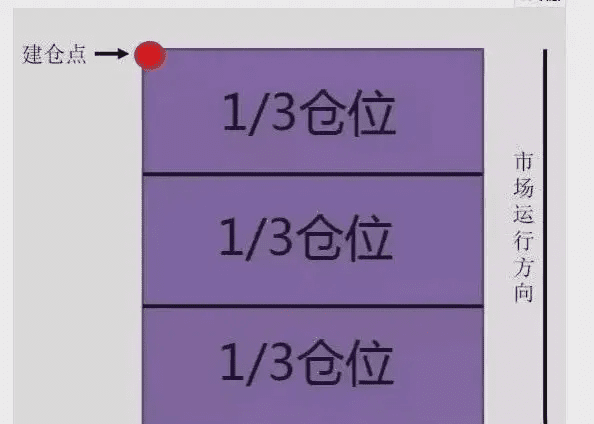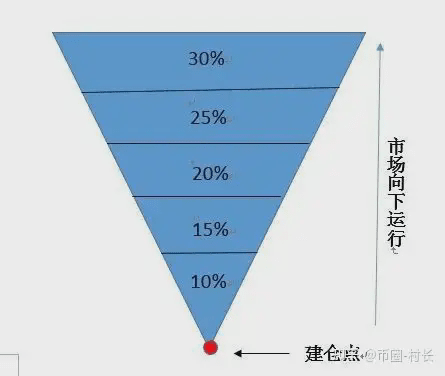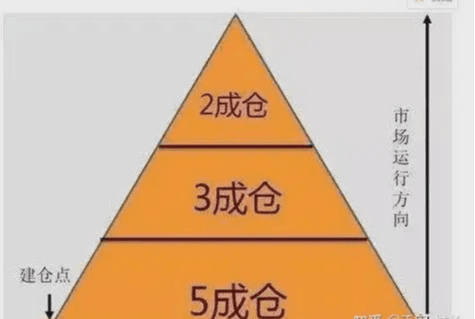In the cryptocurrency space, even with a small amount of money, such as three to five thousand, it is possible to achieve profits through reasonable strategies and risk management.
I have been trading cryptocurrencies for five years, starting with 20,000, and now I support my family through cryptocurrency trading. I have summarized my hard-earned experience.
1. Divide your funds into five parts, and only invest one-fifth each time! Control a 10% stop-loss; if you make one mistake, you only lose 2% of your total funds, and if you make five mistakes, you lose 10% of your total funds. If you're right, set a take profit of over 10%. Do you think you'll still get stuck?
2. How to improve the winning rate again? Simply put, just two words: follow the trend! In a downtrend, each rebound is a trap for the bulls, while in an uptrend, each drop creates a golden opportunity! Do you think it’s easier to make money by bottom fishing or by buying low?
3. Do not touch cryptocurrencies that have rapidly surged in the short term, whether mainstream or altcoins; very few cryptocurrencies can generate several major upward waves. The logic is that it is difficult for a cryptocurrency that has surged sharply in the short term to continue rising. When it stagnates at a high level and cannot push up further, it will naturally fall; it’s a simple truth, but many still want to take a gamble.
4. You can use MACD to judge entry and exit points. If the DIF line and DEA cross above the zero axis, it is a stable entry signal. When MACD forms a death cross above the zero axis and starts to decline, it can be viewed as a signal to reduce positions.
5. I don’t know who invented the term ‘averaging down,’ but it has caused many retail investors to stumble and suffer huge losses! Many people keep averaging down as they lose, and the more they average down, the more they lose. This is the biggest taboo in cryptocurrency trading; it puts one in a dead end. Remember to never average down when you are in a loss; instead, add to your position when you are in profit.
6. Volume and price indicators are paramount; trading volume is the soul of cryptocurrency. When the price breaks out at a low level during consolidation, pay attention; when it shows signs of stagnation at a high level, exit decisively.
7. Only trade cryptocurrencies in an uptrend; this maximizes your odds and saves time. A three-day moving average turning upward indicates a short-term uptrend, a 30-day moving average turning upward indicates a medium-term uptrend, an 84-day moving average turning upward indicates a major uptrend, and a 120-day moving average turning upward indicates a long-term uptrend!
8. Insist on reviewing each session, checking if there are changes in your holdings, technically observing if the weekly K-line trend aligns with your judgments, whether the direction has changed, and timely adjusting your trading strategy!
Today, Xiao Yan will share another piece of pure knowledge—advanced secrets of cryptocurrency trading: position management; avoid heavy losses upon a drop, and escape from the trap of small gains and large losses in position management.
In a cryptocurrency trading system, five questions need to be addressed: ① What to buy ② When to buy ③ How much to buy ④ When to sell ⑤ How much to sell
Among them, the key to what to buy lies in how to select a potential target, and the key to when to sell lies in how to take profits. These two questions have been discussed extensively.
How much you buy is related to position management. This is also a core issue! As I often say: 50-60% of the position for mainstream coins, 30% for altcoins, and 10% for contracts. This method may not allow you to achieve tenfold or hundredfold returns. But really, how many can make money in this bull market? The ultimate reason is position management.
As for when to sell and how much to sell, this can be executed according to the specific planning of your position.
So what exactly is position management? Are there any handy tips for effective position management?
Three methods of position management
01
Firstly, the rectangular position management method.
This method refers to dividing all positions equally; each part of the position has the same amount of money. Common position ratios include thirds, fifths, or even tenths.
This method is more suitable for fluctuating markets. If we cannot determine whether the future market is in an upward or downward trend, then it might be worth trying this method of gradual position increase to spread the risk.

02
Secondly, the funnel position management method, also known as the inverted pyramid management method.
As shown in the figure, this method divides the position from bottom to top into five parts: 10%, 15%, 20%, 25%, and 30%.
When is this method more appropriate? If we judge that the market will maintain a downward trend for a long period in the future, then this method could be worth trying.
In the early stages of a market decline, we use this method to enter because the initial capital is relatively small and will reserve sufficient chips for subsequent increases.
For example, if BTC's current net value is 65,000 and we set the additional purchase amount to 10% drop, then we add 10,000; when the net value drops by 20%, we add 20,000. If the market continues to decline, we continue to add 30,000 until the net value rises.
In summary, this method is suitable for left-side trading, simply put, it’s the process of bottom-fishing, aiming to capture the potential major upward waves that may appear in the future.
Here, I want to remind you that since we do not know when the true bottom will come, we must remember that the interval between each additional purchase should not be too close. Otherwise, if the market bottom has not yet arrived, our ammunition will be exhausted. The key to this method of increasing positions is to manage subsequent funds well.

03
The last method is the pyramid position management method.
This method is exactly the opposite of the previous content; it emphasizes a larger capital input when initially establishing a position, while continuously reducing the proportion of additional purchases as the market rises.
This method is also known as right-side trading, which involves entering when an upward trend has formed, profiting by following the trend, suitable for use during favorable market conditions.
For example, when a bull market starts, we need to use sufficient chips to solidify our foundation. The subsequent 30% or 20% of additional purchases are made with a cautious attitude.
Old rules of Wall Street
‘In a bull market, the most important thing is to hold your chips until significant reversal signals appear.’

Summary
Having discussed these three position management methods, which method is better?
In fact, the market changes rapidly; these three methods themselves have no inherent good or bad. What matters is that we choose the most suitable method for increasing positions based on our judgment of the market.
As a saying that Xiao Yan likes goes:
The essence of investment is actually a manifestation of one's cognitive ability.
Finally, Xiao Yan would like to remind you that regardless of which position management method we adopt, we must maintain a certain proportion of liquidity in our accounts so that we do not lose our right to choose.
At the same time, remember that a good method for increasing positions does not mean it is unchanging, but that it should adopt the most suitable approach as the market changes.
Investment stems from life and is part of our lives. We can gain insights into the true meaning of life through investment and summarize the rules of investment from life.
The main reason for the failure of many public investors is: insufficient execution, lack of patience, emotional fluctuations, lack of a winning belief, etc. These flaws are also commonly seen in life. What investors need to learn is not just how to make money, but to correct their various bad habits and thoughts, to cultivate their character, and on that basis, to carry money.
Successful investors are calm and composed. Once we abandon various desires, nothing can control us, and we achieve true freedom in body, mind, and finances.
‘Going all in’ is not real bravery, and ‘holding lightly’ is not great wisdom. Only those who can control their positions are truly strong at heart.
In summary, position management can be simply encapsulated in one sentence: do not easily leverage, do not easily go all in, and do not easily short.
Today, Xiao Yan will share my insights from years in the cryptocurrency space with everyone.
1. Why do most retail investors lose money? It's not that retail investors can’t pick cryptocurrencies; a major reason is that they don’t know how to operate. Either they trade too frequently, or they go all in without understanding the overall trend of the cryptocurrency market.
Every time they have time, they stare at the market, get anxious when they see a decline, and want to operate, which easily leads to missing out on major trends. Sometimes, when the cryptocurrency is clearly in a downtrend, they stubbornly hold on, turning short-term trades into long-term holdings, ultimately losing even more. The correct operation is to select a project with a good fundamental basis and good growth potential, and as long as it is overall in an upward trend, one can hold onto it.
2. Drops present opportunities, while rises present risks. Retail investors often like to chase after rises and fear declines. They feel uncomfortable when the cryptocurrencies they hold do not rise for a day and want to chase after those that do rise, resulting in always standing guard at high levels. When their cryptocurrencies undergo significant adjustments, they cannot bear it, ignoring the overall trend, leading to missing out on strong cryptocurrencies and substantial profits. In reality, declines are opportunities, especially during volume decreases in an upward trend; these opportunities are golden pits.
3. Only operate within your own system. When you have your own operational system, you will find trading becomes much easier, no longer attracted by market hot spots, but instead remaining calm and composed. For example, if I focus on trend value operations, I only look for undervalued sectors with good fundamentals, add them to my watchlist, and when market funds enter, I follow suit for trend operations, exit after taking profits, and then look for the next target, clean and straightforward. Thus, I rarely get stuck at high points; it’s only possible if the price movement does not meet expectations that I eventually exit.
4. Set take-profit and stop-loss levels. Trading cryptocurrencies is inherently a probabilistic event, with both successes and failures. For most cryptocurrency traders, setting take-profit and stop-loss levels is very important.
When the price movement does not meet expectations or falls below the trend, one must stop-loss unconditionally; do not hold on and waste time. Similarly, when the price has already gained significantly, exiting at any time is a good decision; do not feel regretful. Very few can exit at the peak; it’s sufficient to exit at a relatively high point.
5. Learn to diversify positions; do not put all your eggs in one basket. For example, if you are very optimistic about a cryptocurrency and go all in, but then get stuck at a 10% loss, you are left with no options and only can watch. However, if you enter with 30% of your position, you can choose to add to your position or exit because the loss will not significantly impact your overall position.
6. Have patience; waiting is also a form of operation. We are not gods; we cannot just enter the market and eat profits. Many times, we need to wait, and time can compensate for mistakes in operation. If your trading skills are lacking, use time to make up for it.
7. The gold is revealed only after the sand is washed away; it is easier to find truly strong stocks in a weak market. When the index falls sharply, if your cryptocurrency rises against the trend or only slightly declines, it indicates that there are strong forces behind this cryptocurrency, making it suitable for long-term holding with significant future potential.
In the cryptocurrency space, it's essentially a battle between retail investors and institutions; if you lack solid professional skills, you can only be cut off! Those who want to collaborate and harvest together are welcome to discuss with like-minded individuals in the cryptocurrency space~ The secrets have been shared; whether you can make a name for yourself in the market depends on you.
These methods must be saved by everyone, watch them a few more times, and friends who find them useful can forward them to more people involved in cryptocurrency trading, follow me to learn more industry insights. After being through the rain, I am willing to hold an umbrella for the retail investors! Follow me, and let’s walk hand in hand on the road of cryptocurrency!
I am Xiao Yan, having experienced multiple cycles of bull and bear markets in the cryptocurrency space, I entered the industry three years ago, mastered it in five years, and dominated for ten years. I possess rich trading experience in various cryptocurrency fields. Follow Xiao Yan to clear the fog of information and gain insight into the real cryptocurrency market. Seize more opportunities for wealth growth and discover truly potential cryptocurrencies; do not miss good opportunities again!


